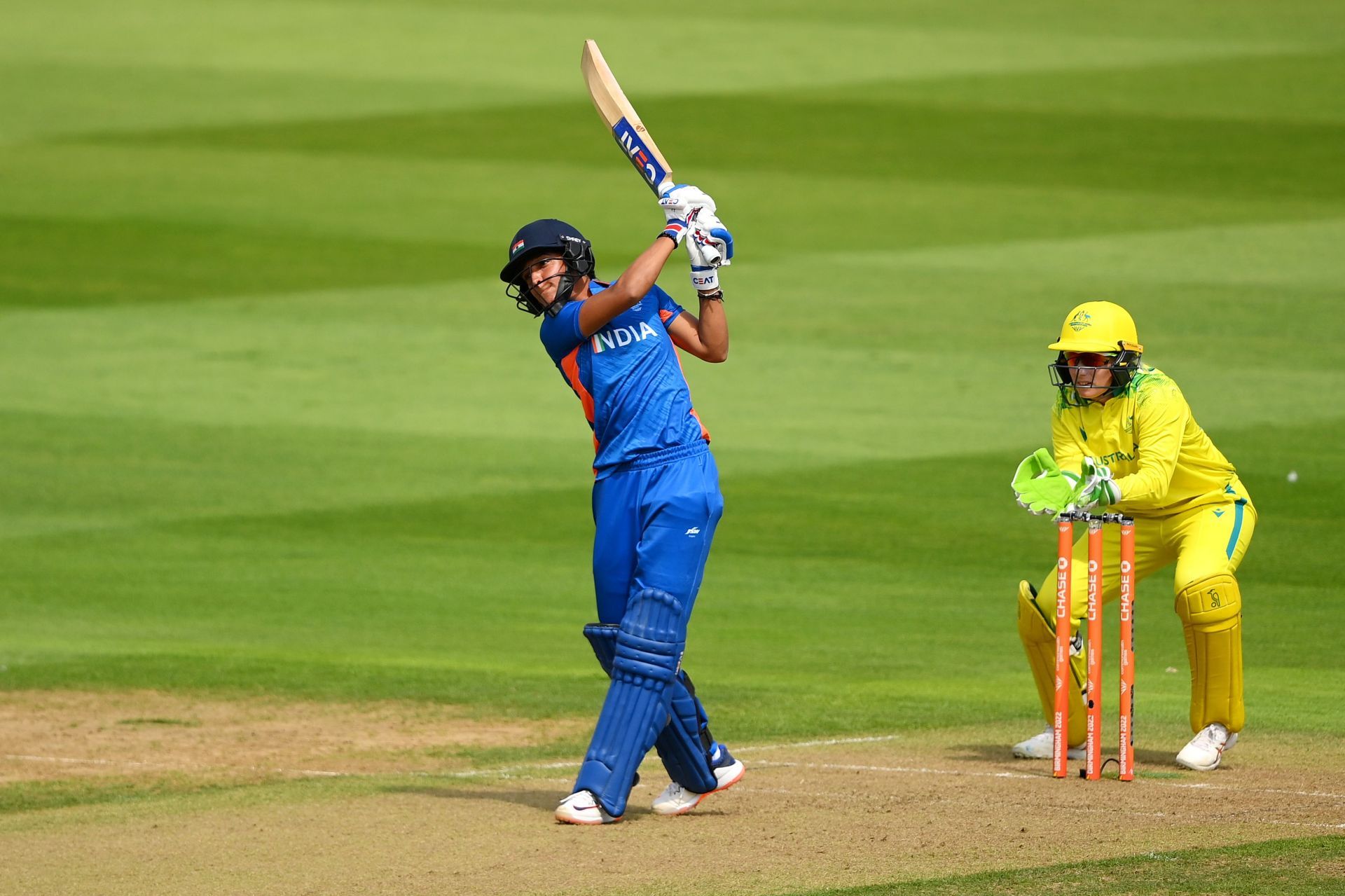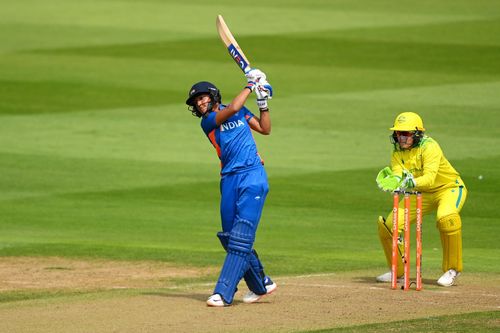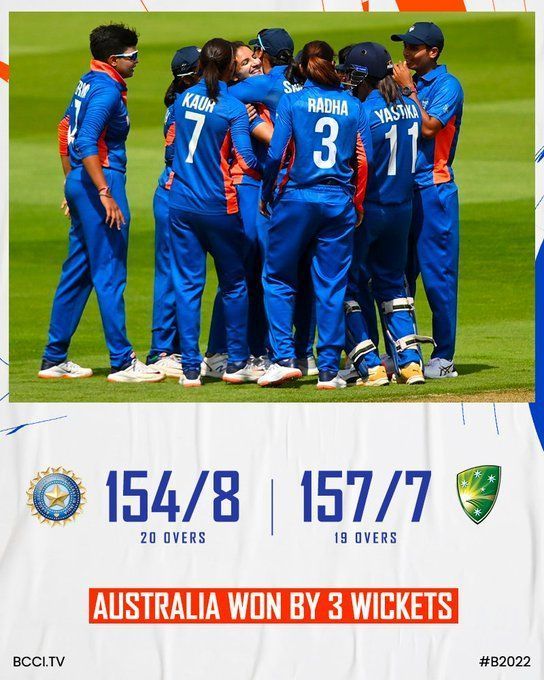
India's reaction to pressure situations will define their CWG campaign

For much of the Indian women's cricket team opening Commonwealth Games fixture against Australia, it seemed that they would get the better of the Southern Stars. They had put runs on the board and had rocked the Australian batting unit, with Renuka Singh Thakur picking up four wickets in the powerplay.
During that sequence, Alyssa Healy and Beth Mooney had been sent back to the pavilion. Meg Lanning too, bit the dust, and Tahlia McGrath – so often the Southern Stars’ clutch batter, was outfoxed completely by Renuka. Deepti Sharma piled on further misery, outwitting Rachael Haynes in the 8th over, leaving Australia tottering at 49/5.
That opening salvo was, in many ways, the level the Indian women's cricket team have been striving to achieve. Prior to Harmanpreet Kaur’s ascent to undisputed leadership, the Indian women's cricket team had struggled to pick up wickets during the field restrictions. With Harmanpreet at the helm, there has been a more concerted effort to attack – an endeavour that has been backed up by bowlers of Renuka and Pooja Vastrakar’s ilk.
The latter wasn’t available for the fixture against Australia, although the former did enough to highlight that the Indian women's cricket team had made giant strides since the Women’s World Cup earlier in the year. During that competition, there were accusations that the Women In Blue just weren’t brave enough – both with the bat and the ball.
The batting philosophy has, to an extent, also changed under Harmanpreet’s stewardship. Not only do the batters have greater freedom to play their strokes, they also seem to have more conviction in the strokes they are attempting. Against Australia, only two Indian batters got past the 30-run mark. Yet, they still managed to breach the 150-run barrier, indicating that they could be a daunting force when all of their components click into gear.
Thus, it wouldn’t be a stretch to suggest that a lot of things have changed since their premature exit at the Women’s World Cup – both in terms of tangible outcomes and intangibles. And the match against Australia was perhaps the best illustration that the Indian women's cricket team have the requisite resources to hunt for glory at the Commonwealth Games in Birmingham.
Significant improvements have been made. The Indian women’s cricket seem better equipped than they did a few months ago, and have a leader who has dared a million people to dream big. End of story, right? Why waste time reading this article then?
But here’s the thing. The Indian women's cricket team have already come a long way since the heartbreak in New Zealand, and for that, they deserve every bit of credit. Not just because they have bought into a new idea very quickly, but also because these displays have come about despite the lack of a proper high-level domestic structure (read Women’s IPL).
The best part, though, is that this particular Indian women's cricket team is capable of so much more. Not many envisioned them beating Australia anyway. The Southern Stars are the reigning world champions in both white-ball formats and hardly lose a game. Yet, whenever they have been troubled, it has inevitably been by the Indian women's cricket team.
India have still not won a significant chunk of those games, leading you to question what actually is plaguing them. The answer might seem complicated at first, considering Australia and India have been on different planes in the white-ball game since the COVID-19 pandemic. The closer you look, however, the simpler it gets. The Indian women's cricket team have just not won the moments that have mattered.
The Indian women's cricket team wilted pressure against Australia
On Friday, India had several opportunities to put the contest to bed. At 49/5, they shouldn’t have allowed Ashleigh Gardner and Grace Harris to take the game away from them. India didn’t bowl badly per se, although it can be argued that it wasn’t as good as you’ve come to expect from the Women In Blue.
Harris, as soon as she walked out, had signalled her intention to dominate. India, possibly riding their crest of optimism, tried too many things to dismiss her. Instead, they could’ve tempted her into a trap and forced her into a situation where she would get caught up in her own reputation.
Something similar happened with Gardner. The veteran began her innings sluggishly and played second-fiddle to Harris. It was almost as if she was waiting for India to go searching for wickets and err in lines and lengths. When that happened, she punished the Indian women's cricket team.
With the bat, too, India had their fair share of moments. Shafali Verma had rattled along to 48 and Harmanpreet was looking in fine touch. However, they lost three wickets between the 12th and the 16th over.
At a time when they should’ve capitalized on the advantage fashioned earlier in the innings, they handed over the initiative. Harmanpreet still stuck around and hauled India to 154. Against a strong Australian unit, though, it would’ve required an all-round bowling performance to win – something they just couldn’t put together.
Even during the Women’s World Cup earlier in the year, there were several opportunities that India withered away. Talk about the game against Australia, and it would seem the Southern Stars trampled the Women In Blue. They actually didn’t. The Indian women's cricket team had runs on the board and more proactive decision-making could’ve swayed the tie in their favour.
Similarly, the Indian women's cricket team came up short in a must-win clash against South Africa. There’s no point rummaging through the details in an event that’s happened a while ago. However, there is plenty of sense to learn from those mistakes and not repeat it again.
This Indian side has all the ingredients to be successful at the Commonwealth Games. It isn’t like the Indian outfit that rocked up for the Women’s World Cup and had asterisks attached to it. This team can compete against the biggest gunslingers in the sport and has more than enough resources to hold their own. They’ve shown incredible gumption to get to this stage too, having turned things around.
What’s stopping them then? The inability to win the crucial moments in matches. It happened regularly during the Women’s World Cup and it resurfaced against Australia at Birmingham on Friday.
Almost everything else has changed, mind you. So, if this particular aspect does too, who knows how far this Indian women’s cricket team can go?!

